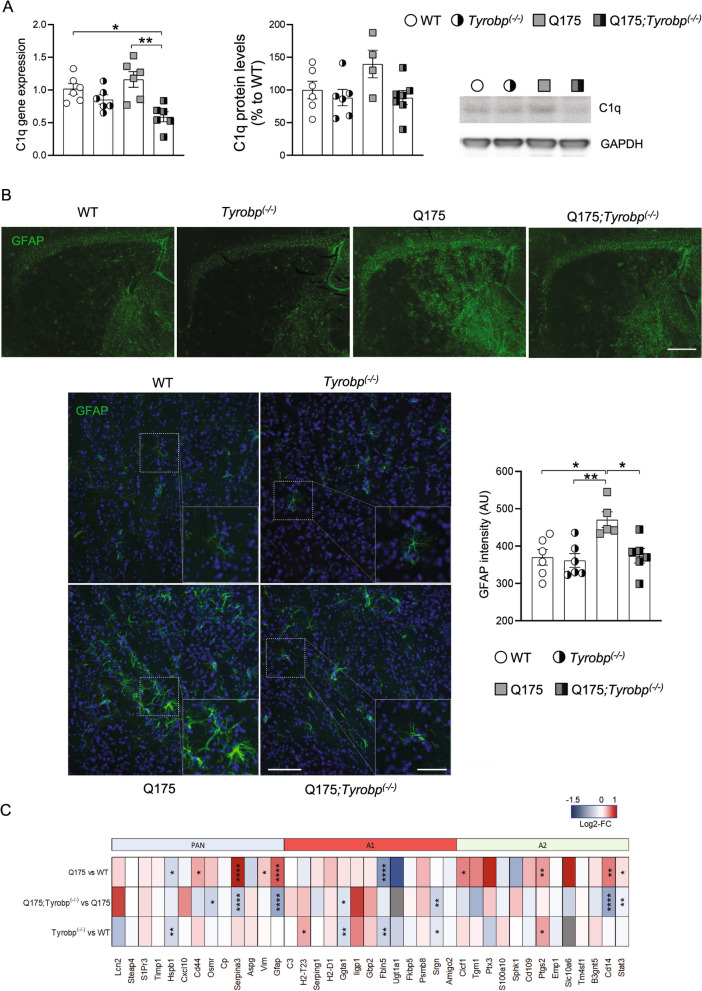Fig. 7.
Tyrobp deletion reduces C1Q and GFAP levels in Q175 mice. A RT-qPCR of C1q mRNA and western blot and densitometric analysis of C1Q protein in the striatum of WT and Q175 mice with and without Tyrobp (10 months of age), n = 4–6 mice per group. Quantitative analysis is shown as mean ± SEM. Each point represents data from an individual mouse. Statistical analysis was performed using Two-Way ANOVA. *p < 0.05; **p < 0.01. B Representative images showing GFAP (green) staining in the striatum of WT and Q175 mice with and without Tyrobp (upper panel). 4X magnification, Scale bar, 500 µm. Representative images (20X and inset, 40X) showing GFAP (green) staining in the striatum of WT and Q175 mice with and without Tyrobp. Quantification of the intensity is shown as mean ± SEM (n = 5–6 mice per group). Each point represents data from an individual mouse. Statistical analysis was performed using Two-Way ANOVA. *p < 0.05; **p < 0.01. Scale bar, 25 µm. C Heatmap showing Q175 vs WT (top) and Q175;Tyrobp(−/−) vs Q175 (middle) and Tyrobp(−/−) vs WT log2 fold-change of reactive astrocyte marker genes. in the transcriptome nominal p-value from the differential expression analysis is shown. ****p < 0.0001; ***p < 0.001; **p < 0.01; *p < 0.05

